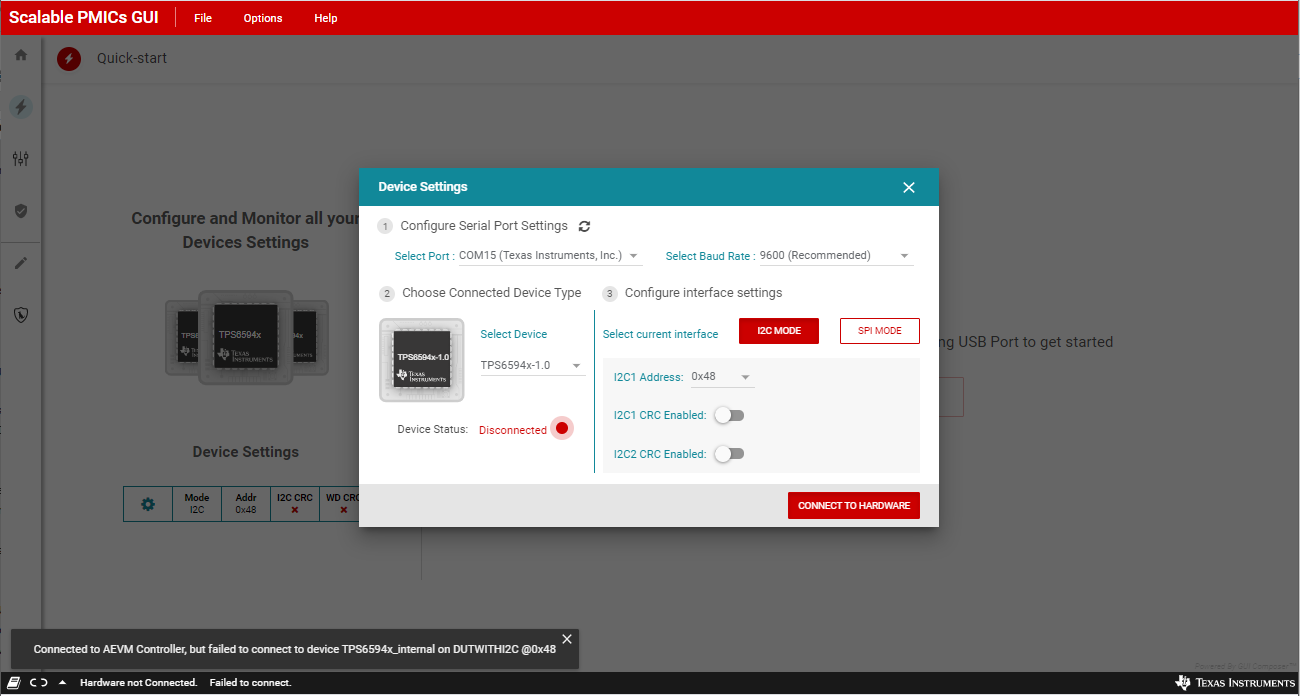SLVUBT8B November 2020 – June 2022 LP8764-Q1 , TPS6594-Q1
- Scalable PMIC's GUI User’s Guide
- Trademarks
- 1 Introduction
- 2 Supported Features
- 3 Revisions
- 4 Overview
- 5 Getting Started
- 6 Quick-start Page
- 7 Register Map Page
- 8 NVM Configuration Page
- 9 NVM Validation Page
- 10Watchdog Page
- 11Additional Resources
- 12Appendix A: Troubleshooting
- 13Appendix B: Advanced Topics
- 14Appendix C: Known Limitations
- 15Appendix D: Migration Topics
- 16Revision History
12.2 PMIC Device Not Found
 Figure 12-2 PMIC Communication Error
Figure 12-2 PMIC Communication ErrorIf the hardware platform is connected but the PMIC device is not found, then the GUI will report an error regarding the address: Connected to AEVM Controller, but failed to connect to device TPS6594x_external on I2C @xx. In the case of I2C this means that the address was not acknowledged (NACKed). Perform appropriate I2C bus checks: appropriate pull-up resistors, verify that no device is holding the clock low (clock-stretching), and so forth. Verify that the correct I2C address is being sent. The default address which the GUI uses may not be correct and it is necessary to update the address using the Device Settings below the Options tab.
Similarly with SPI, ensure that the hardware connection is correct and that the chip select is connected to the appropriate PMIC when multiple PMICs are in use.